On my last tarot post, I had several comments from people admiring the deck I used. That deck is not my favorite, though I love it when I’m in the right mood. From that discussion, the idea for this post was born. It’s rather long, so let’s get into it!
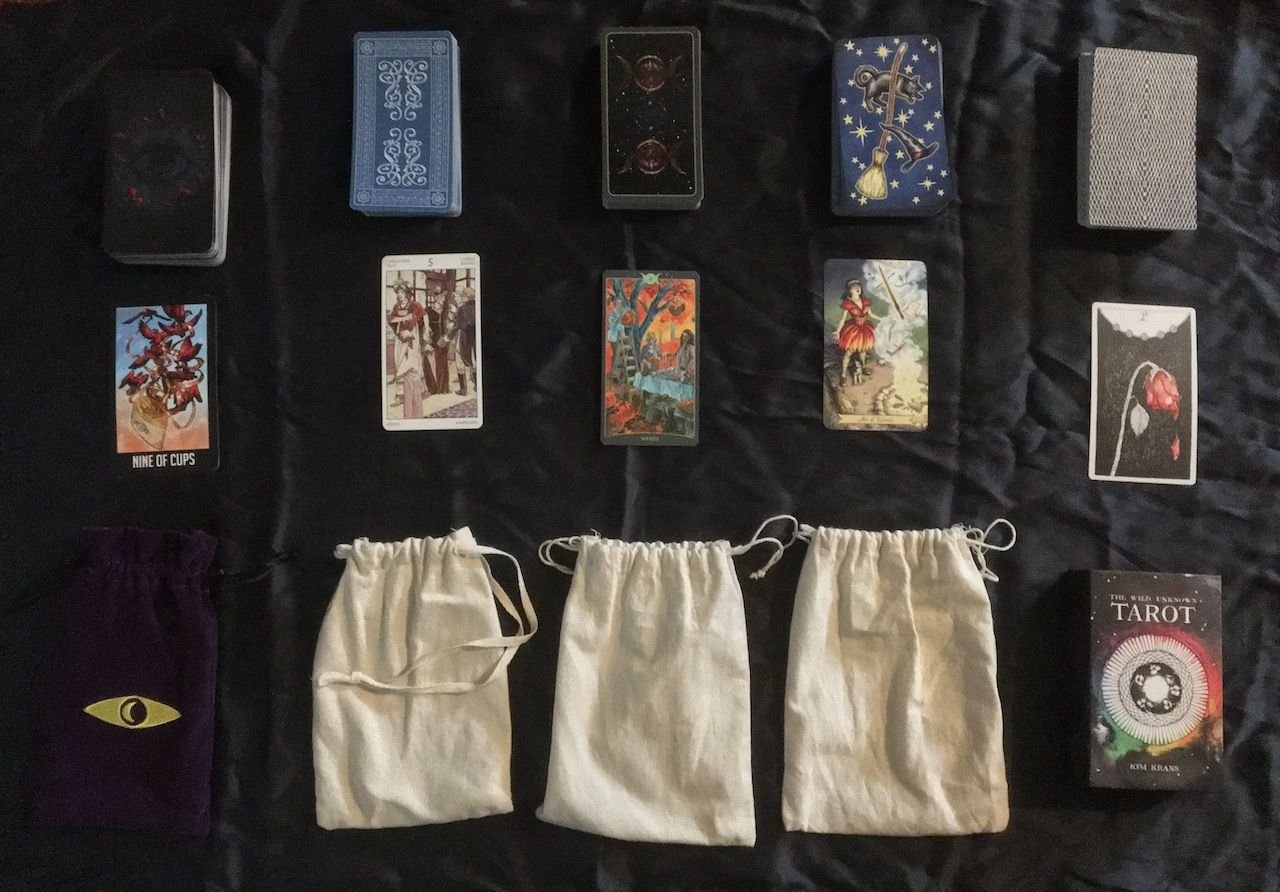
My Decks:
I currently own five decks. I am waiting for another one to come in the mail, and I’m very excited to get that one—it’s the Numinous Tarot, a deck which emphasizes diversity, with a variety of races, genders, sexual orientations, and body sizes evident throughout.
The decks I have on hand are the following:
- Tarot of Jane Austen (see this deck on Aeclectic)
- Wild Unknown Tarot (see this deck on Aeclectic)
- Everyday Witch Tarot (see this deck on Aeclectic)
- Book of Shadows, Vol. 2: So Below (see this deck on Aeclectic)
- Welcome to Night Vale Tarot (see this deck reviewed in Spiral Nature)
In the past, I have owned other decks, but they did not connect with me, and so I gave them away. They were the Tarot of the Witches, the Lord of the Rings Tarot, the Steampunk Tarot: Wisdom from the Gods of the Machine, and the Vampire Tarot.
The Tarot of the Witches was my first deck, purchased almost 20 years ago, but I did not connect with the art and when I tried working with the deck I just felt confused and disconnected. The LotR, Steampunk, and Vampire Tarots all appealed to me on a conceptual basis, but once I had them I discovered art that wasn’t to my taste, and in the case of the Steampunk Tarot I found myself baffled by the suit cards, which had been re-named to match the theme, and were highly unintuitive for me.
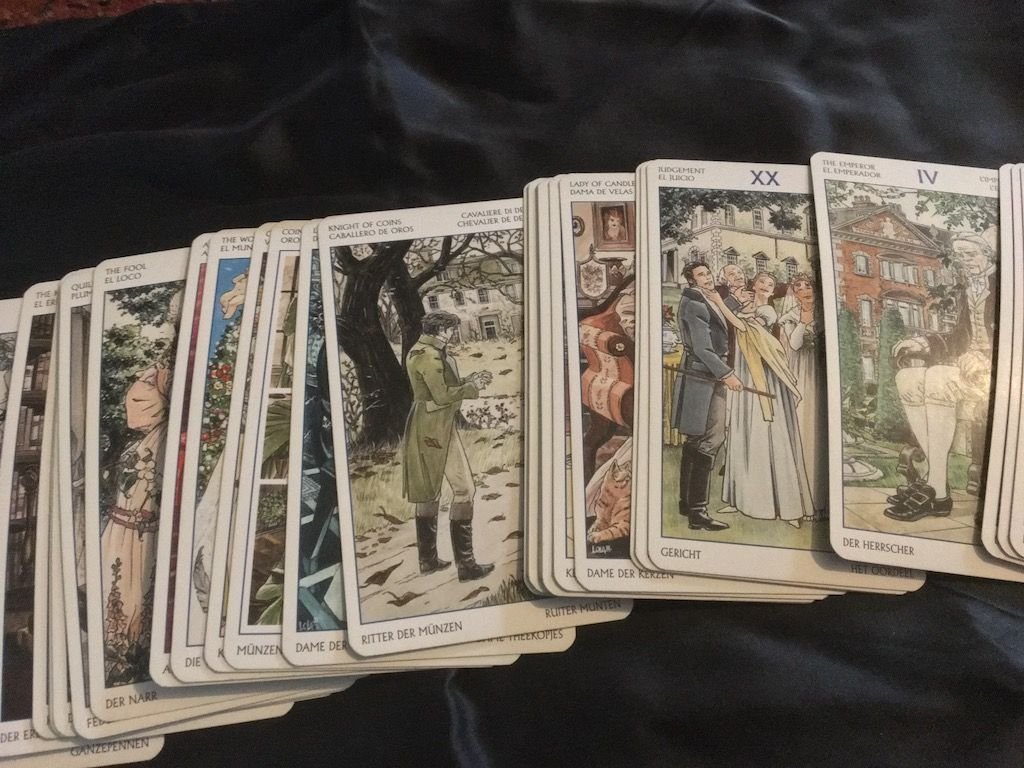
Tarot of Jane Austen
For about six years, Tarot of Jane Austen was my primary deck, and I loved it. I am a pretty big fan of Jane Austen, and I’ve read all of her completed works, making this deck easier to use than it would be if I were unfamiliar with her works. This is also true for the Welcome to Night Vale Tarot—familiarity with the work that inspired it is almost necessary to working well with the deck.
The Wild Unknown Tarot is an interesting case for me, because I love the art, but I find the deck strange and inaccessible to work with. Among my decks, this is the only one that contains no human figures anywhere in the deck, and that gives it a remote feel for me. At the moment, I mainly reserve it for spell-casting. I will also occasionally pull one card from this deck to illuminate a reading done with a different deck, and that’s worked well in the past.
So, how do you choose the right deck?
First of all, there’s a widespread myth that a reader’s first deck must be gifted to them, but most experienced readers agree that it’s perfectly acceptable to buy your own. In fact, it’s generally preferable, because your individual ‘fit’ with any deck is very important. Unless you select the deck and another pays for it, you may end up with a deck that is not suitable for you, and that’s just silly.
Second, many people tell first-time tarot buyers to buy a Rider-Waite-Smith deck. The RWS is perhaps the most ubiquitous deck in existence. If you’ve seen a tarot deck in a film or tv show before, there’s a very good chance this was the deck shown, if it wasn’t the Tarot of Marseilles.
Created to the specifications of A. E. Waite, a member of an esoteric organization called the Hermetic Order of the Golden Dawn, every card in the deck is packed with obscure symbolism that relates to astrology and Christian mythology. Pamela Colman Smith was commissioned to draw the deck, because she was known as a kind of medium, and because she was also a member of the Hermetic Order. Traditionally called the Rider-Waite, there has been a conscious attempt in recent years to refer to this as the Rider-Waite-Smith, or simply the Waite-Smith, in recognition of the artist who actually drew the cards, rather than the publisher who put the deck out.
This deck is widely recommended, but I personally don’t find it attractive, and I’ve never owned a copy. Additionally, not every beginner is ready to delve into the symbolism behind the cards, in my opinion, and if the art doesn’t connect with them, they may be turned off tarot entirely. Your mileage may vary, of course—some people love the art on the RWS, and if this deck calls to you, go for it!
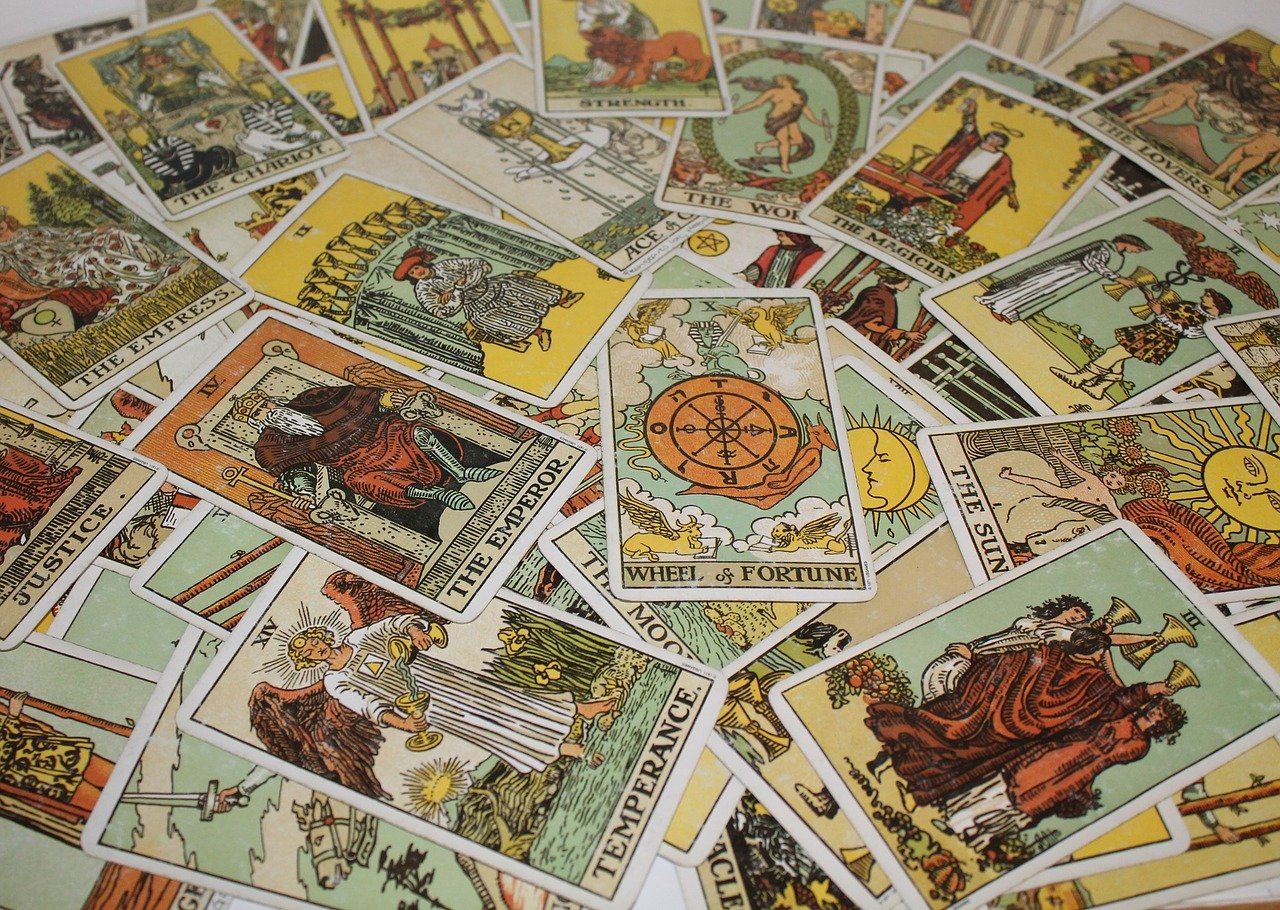
Rider-Waite-Smith Tarot - Photo by AlbanyColley on Pixabay
The best way to find a deck that you can have a long and happy working relationship with is to see the deck before buying. Most occult shops and bookshops that carry tarot decks will have display copies that buyers can browse through upon request, or they will have a binder with a page for each deck, featuring a selection of card images. It can be helpful to pick a couple of cards to compare across decks, and to look at both major and minor arcana cards for any deck you are considering. If you only look at one card, you may find yourself surprised or disappointed by the overall look of the deck once you get it home.
If it’s not possible to physically handle the deck beforehand, or the shop offers neither display decks nor a binder, a huge selection of decks are profiled on Aeclectic Tarot, with user reviews attached to them. While Aeclectic review pages don’t feature images of every card in the deck, they usually offer a mix of major and minor arcana, and will often also show the card back, which is one of the considerations I’ll discuss below. If a deck is not featured on Aeclectic, a google search for reviews is always another way to explore a deck before buying. Most reviews will show a few of the cards, and will discuss important details about the deck that a prospective user ought to know.
Important Considerations:
- card size
- card thickness
- durability
- ease of shuffling
- card order
- suits and names
- visual aesthetic
- reversible card backs
- symbolism
- pip cards
- energy and intuitive response
These different characteristics can mostly be grouped into three categories: 1) physical elements of the card, which include the dimensions of the individual cards, thickness of cardstock used, lamination and ease of shuffling, and potential durability; 2) structure, including card order, and suit names; and 3) visual elements, which encompasses visual aesthetic, reversibility of card backs, symbolism in the illustrations, and whether the deck is fully illustrated. The last consideration, and perhaps the most important, is your own intuitive response.
Physical elements:
I have kind of small hands, so card size is pretty important. My biggest deck is the Welcome to Night Vale Tarot, and it’s juuuuuuust this side of too big. I definitely have more trouble shuffling this one than any of my other decks, especially since it’s printed on very thick, sturdy cardstock. This gives me a lot of hope for this deck’s durability, but it does cause problems for me now. The problems have lessened as I learned to work with such large, stiff cards, but I dropped cards a lot the first few times I used it.
For completely different reasons, the Wild Unknown Tarot is also difficult to shuffle: the lamination method makes the cards stick together more than any other deck I’ve worked with. They feel lovely in my hand—much more matte than Book of Shadows Vol. 2, for example—but ease of shuffling is not actually a great trade-off.
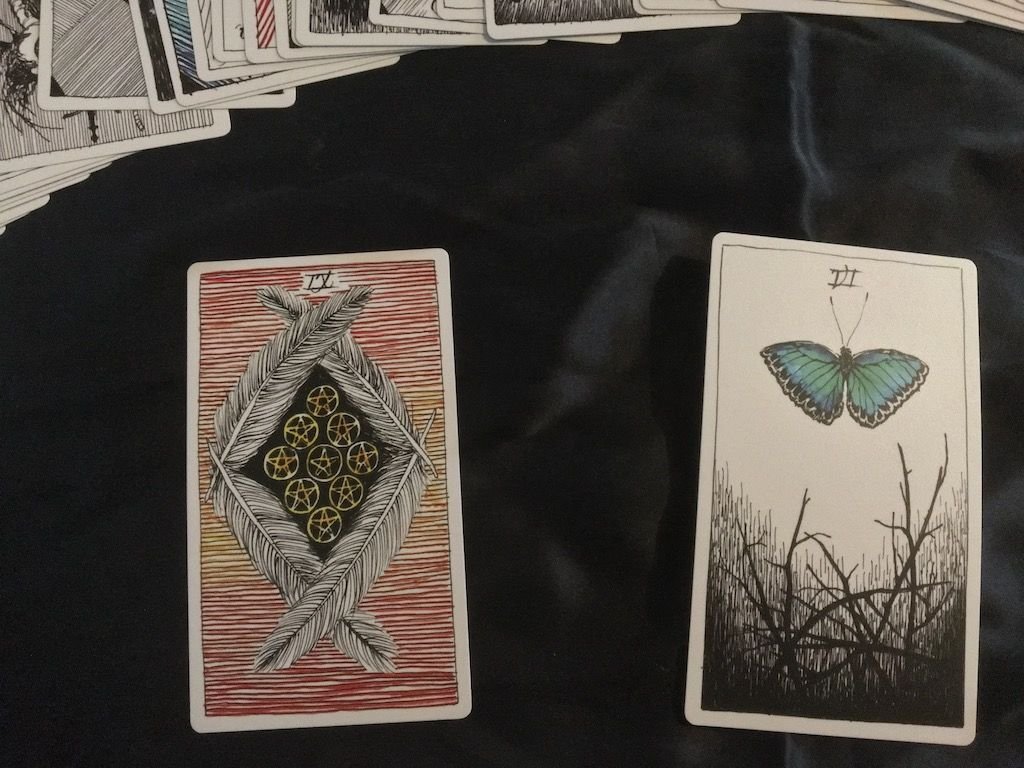
Wild Unknown Tarot
The Tarot of Jane Austen is smaller than the Night Vale deck, but it is also printed on much thinner, flimsier cardstock, which means it may not last as long. If I'm especially clumsy with shuffling that day, the cards will bend and scatter out of my hands, which is frustrating. If you get the chance to physically hold and shuffle a couple of decks, you'll be able to get a feel for the physical variety among decks, but most modern reviewers will also mention this in their write-ups.
Structure:
Traditional decks have four suits: Pentacles, Swords, Wands, and Cups. Sometimes these go by other traditional names—Cups may be Chalices, Pentacles may be Coins or Disks, and Wands may be Staves, Staffs, or Clubs. Wicca and Druid-inspired decks may have Athames in place of Swords, or Cauldrons in place of Cups. Other decks, particularly themed ones, may choose to entirely rename all of the suits to align more closely with their theme.
As I mentioned above, I ended up giving away my copy of the Steampunk Tarot, because they had renamed the suits in a way that I struggled to grasp: Airships = Swords, Engines = Wands, Submersibles = Cups, and Leviathans = Coins. During a reading, I found myself trying to puzzle out whether Leviathans were cups or coins, and it slowed me down. I had actually confused this deck for the more popular Steampunk Tarot by Barbara Moore, a celebrated tarotist. Moore’s Steampunk Tarot is much more in keeping with my aesthetic, and may join my decks at some point in the future.
Some decks choose to rename some or all of the major arcana based on their theme, or to bring them in line with what the creator understands as each individual card’s meaning. Some decks also rename the court cards—which traditionally include the Pages, the Knights, the Queens, and the Kings—to create gender parity or to conform to a theme. Aleister Crowley’s Book of Thoth includes the Princess, Prince, Queen, and King. The Wild Unknown Tarot has the Daughter, Son, Mother, and Father. Such practices vary from deck to deck, and may affect your connection with any given deck.
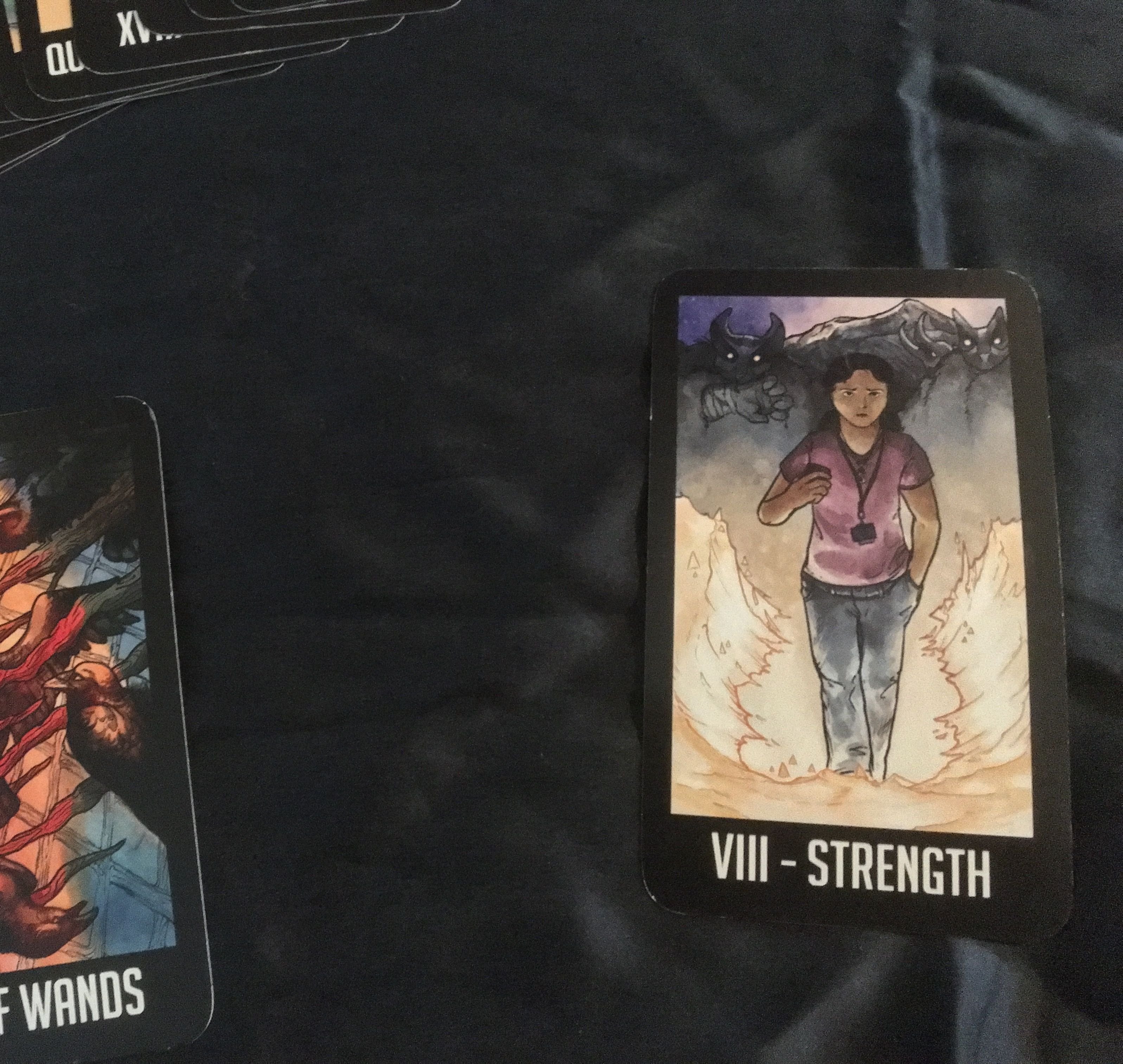
Welcome to Night Vale Tarot
Depending on whether the deck is inspired by the RWS or not, there may be two cards from the major arcana which are switched: Strength and Justice. Traditionally, in decks such as the Tarot of Marseilles the Justice card is numbered 8, and the Strength card is numbered 11. Tarotists subscribing to this ordering of the deck believe it is necessary for understanding the symbolism and numerology of the trump cards.
In the RWS, Strength and Justice are swapped—Strength is 8, Justice is 11. Waite argued that this was the true order of the cards, on astrological grounds, a move which was controversial at the time. He was going against hundreds of years of established wisdom! Because modern decks may be inspired by or patterned upon any of the 3 major systems—the RWS, Crowley’s Thoth, or the Marseilles—neither order is definitively used.
Another switch-up, though one which is far less commonly seen, is to take the Fool card—traditionally unnumbered or numbered 0—and move it to the end of the major arcana, labelling it 22 instead. I have never worked with a deck which has the Fool numbered 22, so I’m unsure how this might affect my reading. It’s not a popular move, because the occultist view of tarot sees the major arcana as a cohesive story, the story of a journey undertaken by the Fool from naiveté to enlightenment. This means nothing to beginners, generally, but you may come across it at some point in exploring which deck or decks you want to buy.
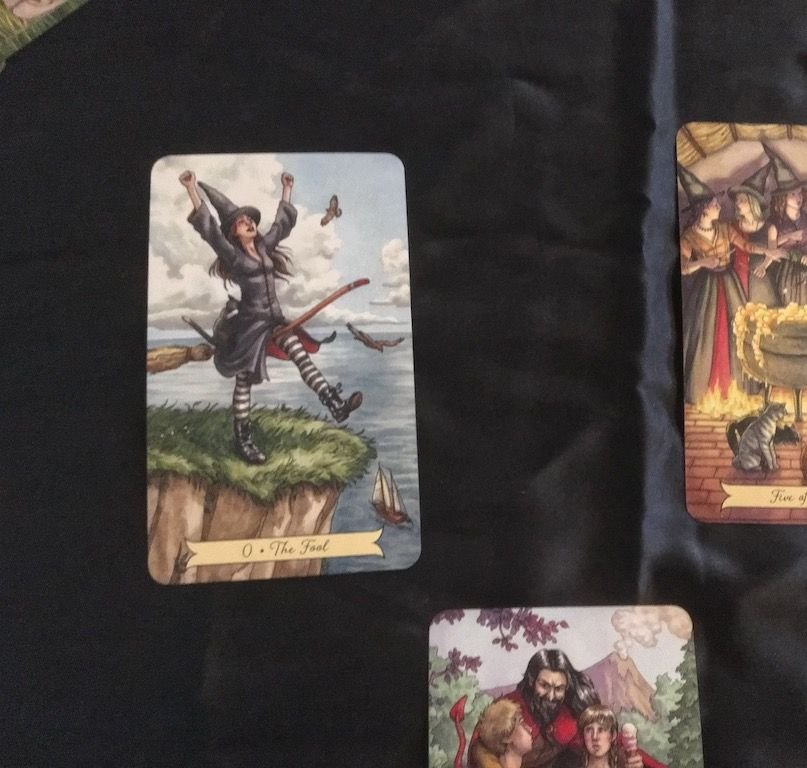
Everyday Witch Tarot
Visual elements:
This section is highly, highly subjective. Aesthetics are pretty individual, and so this is where the most personal decision-making is required, besides your intuitive response. Throughout this post I’ve referred to my own aesthetic preferences, but you will have your own, naturally. The Deviant Moon deck both repels me and draws me in, for instance, but I have a close friend who adores it. I mentioned my dislike for the RWS up front, along with the four decks I purchased and then gifted to people who found them more compelling than I did.
Still, there are some practical matters which we may discuss here: card backs, symbolism, and pip cards. For new readers, I highly recommend a fully illustrated deck, since it is much harder to learn the meanings of the cards and to connect with them if they feature only pips; that is to say, when the 10 of swords merely shows ten swords, how is an inexperienced reader meant to intuit this card’s message of moving on and rebirth? Fully illustrated decks are my personal preference, but they also are more accessible in general, unless you have an eidetic memory or something like that.
Some decks have reversible card backs, and some do not, meaning that you will be able to tell whether a card is coming up ‘reversed’ or not while you are laying the cards. This is only relevant if you plan to learn two sets of card meanings: standard ‘upright’ meanings and reversed meanings. I do not read reversed cards; instead, I shuffle my deck in such a way that all cards remain facing the same direction, and then rely upon my intuition, the card’s placement in a spread, and the surrounding cards to tell me whether each card has taken on a negative or positive meaning in the context of that reading. Some readers swear by reversed meanings, and it is up to every beginning reader to decide for themself which they prefer.
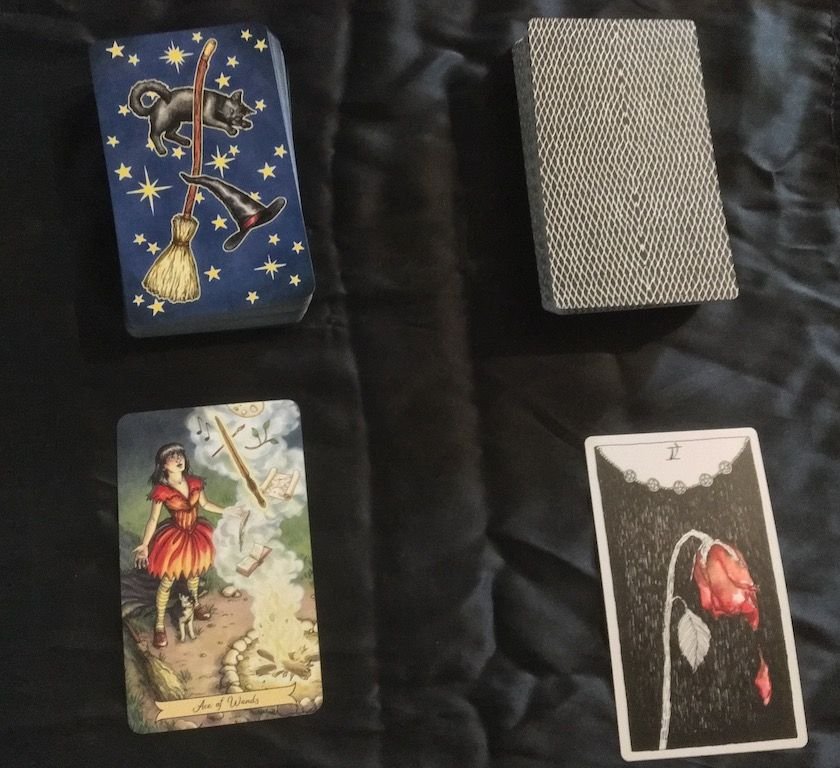
Everyday Witch Tarot and Wild Unknown Tarot
As discussed above, some decks are richer in symbolism than others. RWS features a lot of Christian mythology. Crowley’s Thoth combines color correspondences, ancient Egyptian and Greek mythologies, and Kabbalah (Jewish mysticism), among other things. Many of his cards, but especially the major arcana, are packed with symbols drawn from a wide range of sources. At the other end of the spectrum, the Wild Unknown Tarot features no humans and is very stripped down in style—there’s a simplicity to every image that requires the reader to know their card meanings well. Both Thoth and the Wild Unknown have more to offer the experienced reader than the beginner.
Intuition:
The last consideration on my list is the deck’s energy and your emotional response to it. This is usually the first piece of advice given—“just let your intuition guide you”—but I don’t roll like that. Yes, energy is important, but there are so many different decks out there that you’ll probably get overwhelmed trying to pick one out without some kind of guidance. Your intuition may tweak you on the nose to get your attention, but if it doesn’t you have all the other advice I gave above to help you figure out what your first deck should be, or your next one. As with aesthetics, this is highly personal, so don’t feel bad if you love a deck I dislike, or if it takes you a while to find one that speaks to you. What matters most is that your cards make you happy!
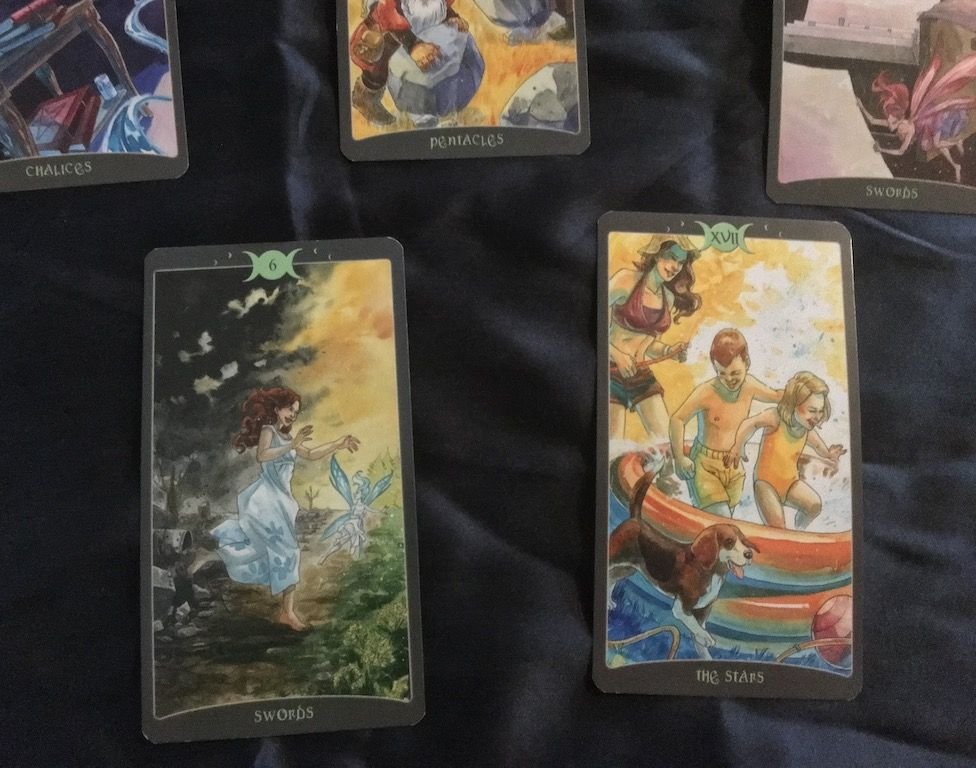
Book of Shadows, Vol. 2: So Below
There you have it—my guide on how to pick a tarot deck to work with. I hope this was clear and that it’ll be useful to you if you’re in the market for a new deck. I tried not to overload it with unnecessary information—when you’ve read a lot about tarot and have a lot of experience, it can be hard to know what might help newer readers understand the tarot, and what’s just excessive. If there’s anything you have questions or thoughts about, drop me a line in the comments. I’d love to chat!
Resources:
- Little Red Tarot’s shop, featuring some beautiful decks, including good pictures and a description of the deck
- Llewellyn’s online shop, featuring a dizzying variety of decks
- Asali Earthwork’s list of queer, trans, and people of color inclusive decks
- Asali Earthwork’s inclusive tarot deck reviews
- Aeclectic’s list of tarot decks by theme
- Tarot Association’s ranked list of popular decks
Oh, one final thing: this post does not apply to oracle cards or ‘wisdom cards’, which often have different naming schemes, symbolism, and numbers of cards. If you’re buying a deck, be aware that tarot decks and oracle decks are generally not the same thing. Oracle cards can be lovely, of course, but they do generally work rather differently than the tarot. If an oracle deck is calling out to you, pick it up, but you may need to purchase a companion book to help you interpret the meaning of these cards, if it doesn’t come as a set.

Thanks for checking out my post. If you liked it, please upvote, comment, and resteem!
Like tarot? Why not join the #tarottuesday party? And don’t forget to check out @steemittarot, a lovely community from the inestimable @traciyork. For other spiritual and paranormal content, check out @beyondtheveil, a community initiated by the wonderful @crazybgadventure that shares spirituality and paranormal content. This article was written for the weekly Beyond the Veil newsletter.
Pictures by me unless otherwise noted. Divider created by javehimself, and used with gratitude.


Click to join the Discord server
 Click the banner to join the Discord server, and click here to follow #teamgirlpowa’s curation trail; to delegate to @teamgirlpowa, click one of these links: 10 SP 20 SP 50 SP 100 SP or set your own amount here
Click the banner to join the Discord server, and click here to follow #teamgirlpowa’s curation trail; to delegate to @teamgirlpowa, click one of these links: 10 SP 20 SP 50 SP 100 SP or set your own amount here


.gif)